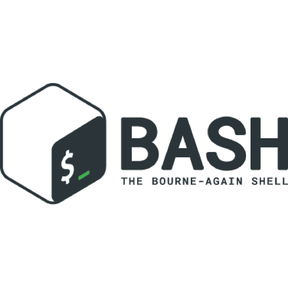If You want to build a website with Grav at short time;
Plus, manage docker containers with Portainer.
arm64/aarch64, x86-64
apk, dnf, yum, apt/apt-get, zypper, pacman
Note: Fedora 37, 39 and alpine linux x86-64 compatible, could not try sles IBM Z s390x, rhel IBM Z s390x and raspberrypi.
Create rules to open ports to the internet, or to a specific IPv4 address or range.
- http: 80
- https: 443
- portainer: 9001
- Auto Configuration and Installation
- Manual Configuration and Installation
- Portainer Installation
- Usage
download with
git clone https://github.com/damalis/full-stack-apache2-grav-for-everyone-with-docker-compose.git
Open a terminal and cd to the folder in which docker-compose.yml is saved and run:
cd full-stack-apache2-grav-for-everyone-with-docker-compose
chmod +x install.sh
./install.sh
Make sure you have the latest versions of Docker and Docker Compose installed on your machine.
Clone this repository or copy the files from this repository into a new folder.
Make sure to add your user to the docker group.
download with
git clone https://github.com/damalis/full-stack-apache2-grav-for-everyone-with-docker-compose.git
Open a terminal and cd to the folder in which docker-compose.yml is saved and run:
cd full-stack-apache2-grav-for-everyone-with-docker-compose
Copy the example environment into .env
cp env.example .env
Edit the .env file to change values of
|LOCAL_TIMEZONE|DOMAIN_NAME|DIRECTORY_PATH|LETSENCRYPT_EMAIL|SSL_SNIPPET|
| Variable | Value | |
|---|---|---|
LOCAL_TIMEZONE |
to see local timezones |
|
DIRECTORY_PATH |
pwd at command line |
|
SSL_SNIPPET |
localhost | echo 'Generated Self-signed SSL Certificate at localhost' |
| remotehost | certbot certonly --webroot --webroot-path /tmp/acme-challenge --rsa-key-size 4096 --non-interactive --agree-tos --no-eff-email --force-renewal --email ${LETSENCRYPT_EMAIL} -d ${DOMAIN_NAME} -d www.${DOMAIN_NAME} |
|
Firstly: will create external volume
docker volume create --driver local --opt type=none --opt device=${PWD}/certbot --opt o=bind certbot-etc
Localhost ssl: Generate Self-signed SSL Certificate with guide mkcert repository.
docker compose up -d
then reloading for webserver ssl configuration
docker container restart webserver
The containers are now built and running. You should be able to access the Grav installation with the configured IP in the browser address. https://example.com.
For convenience you may add a new entry into your hosts file.
docker compose -f portainer-docker-compose.yml -p portainer up -d
manage docker with Portainer is the definitive container management tool for Docker, Docker Swarm with it's highly intuitive GUI and API.
You can also visit https://example.com:9001 to access portainer after starting the containers.
docker ps -a # Lists all containers managed by the compose file
docker compose start # Starts previously stopped containers
docker compose stop # Stops all running containers
docker compose down # Stops and removes containers, networks, etc.
docker compose down -v # Add --volumes to remove volumes explicitly
docker rm -f $(docker ps -a -q) # Removes portainer and the other containers
docker volume rm $(docker volume ls -q) # Removes all volumes
docker network prune # Remove all unused networks
docker system prune # Removes unused data (containers, networks, images, and optionally volumes)
docker system prune -a # Removes all unused images, not just dangling ones
docker rmi $(docker image ls -q) # Removes portainer and the other images
docker container logs container_name_or_id # Shows logs from all services
Copy all files into a new directory:
docker compose up -d # Starts services in detached mode (in the background)
https://docs.docker.com/reference/cli/docker/compose/
You should see the "GRAV" page in your browser. If not, please check if your PHP installation satisfies Grav's requirements.
https://example.com
add or remove code in the ./php-fpm/php/conf.d/security.ini file for custom php.ini configurations
https://www.php.net/manual/en/configuration.file.php
You should make changes custom host configurations ./php-fpm/php-fpm.d/z-www.conf then must restart service, FPM uses php.ini syntax for its configuration file - php-fpm.conf, and pool configuration files.
https://www.php.net/manual/en/install.fpm.configuration.php
docker container restart grav
add and/or remove grav site folders and files with any ftp client program in ./grav folder.
You can also visit https://example.com to access website after starting the containers.
add or remove code in the ./webserver/extra/httpd-ssl.conf file for custom apache2/httpd configurations
https://httpd.apache.org/docs/2.4/
Because Grav is a flat-file based CMS, meaning no database underpins it, the folder structure of your site is very important. At the top level of your Grav installation the folder structure looks like:
/assets
/backup
/bin
/cache
/images
/logs
/system
/tmp
/vendor
/user
https://learn.getgrav.org/17/basics/folder-structure
These options should go under the cache: group in your ./grav/user/config/system.yaml:
cache:
...
redis:
server: redis
port: 6379
https://learn.getgrav.org/17/advanced/performance-and-caching#redis-specific-options
The Cache section is where you can configure the site's caching settings. You can enable, disable, choose the method, and more.
https://learn.getgrav.org/17/basics/grav-configuration#cache
This will back up the all files and folders in html volumes, once per day, and write it to ./backups with a filename like backup-2023-01-01T10-18-00.tar.gz
BACKUP_CRON_EXPRESSION: '20 01 * * *' the UTC timezone.
